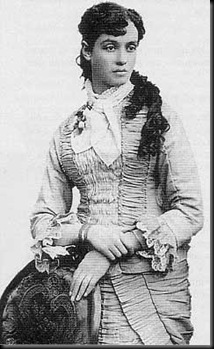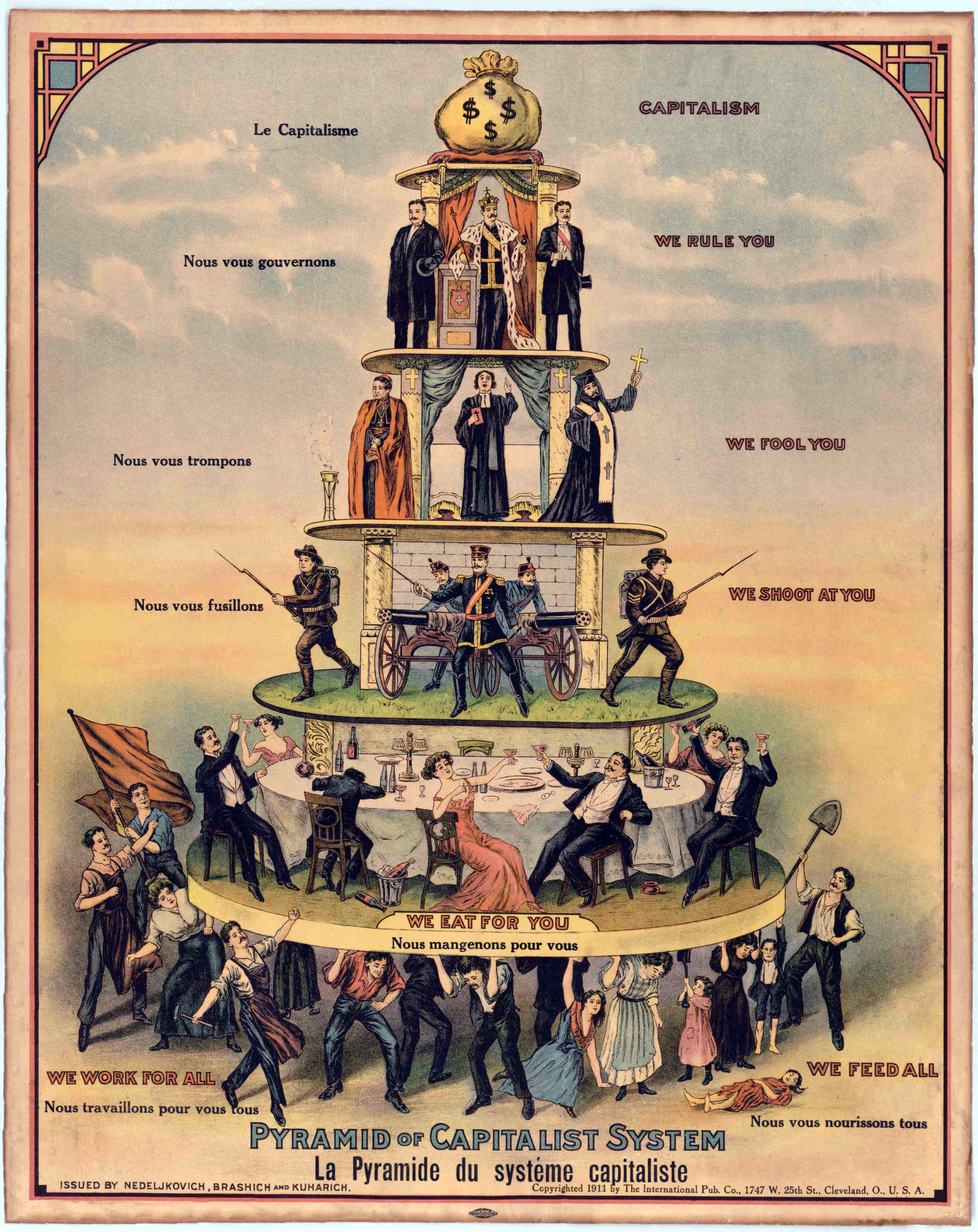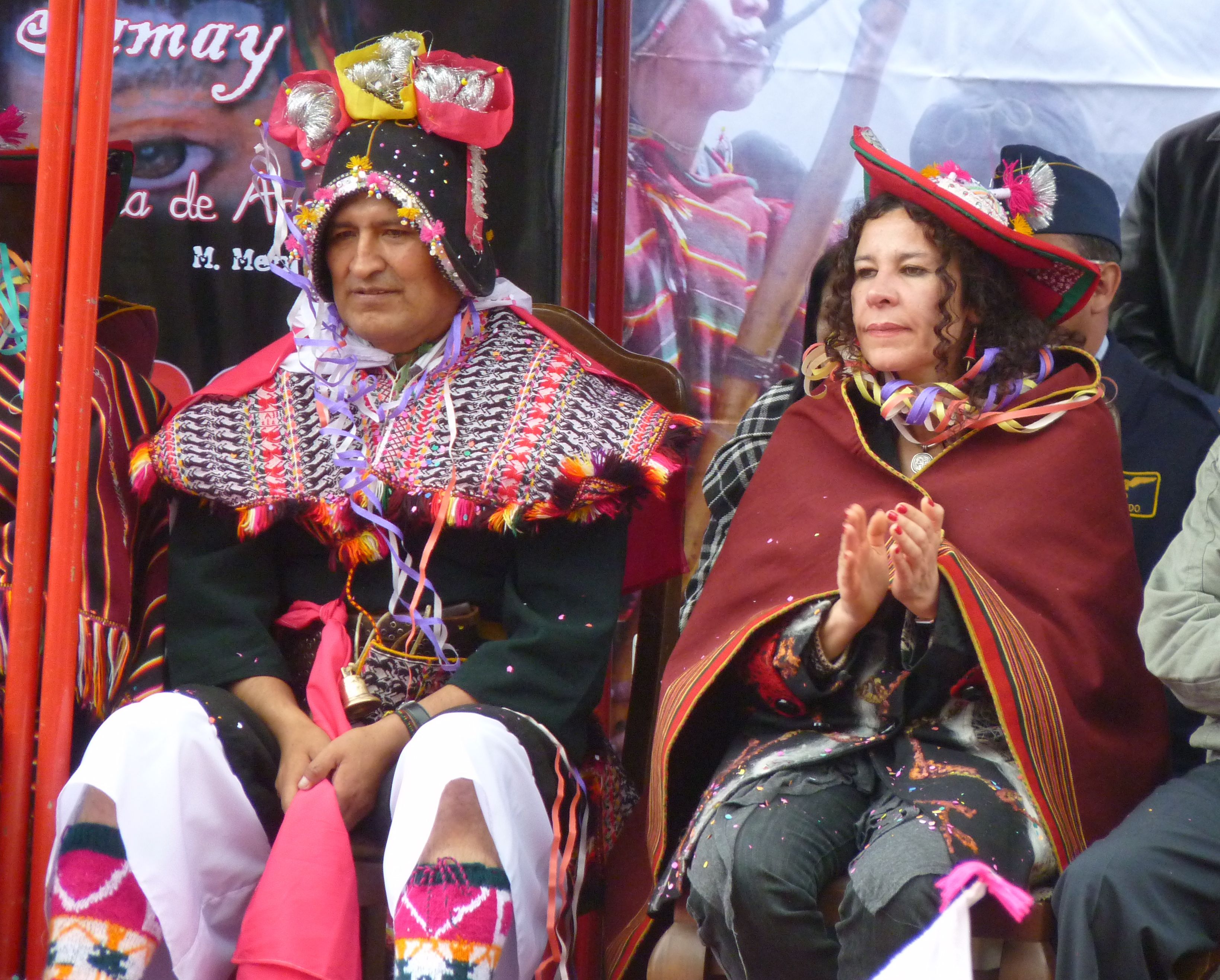|
Feminism In Bolivia
Although the Constitution of Bolivia guarantees equal rights for women and men, women in Bolivia face struggles and discrimination in several aspects of their lives. According to the Human Development Report published by the Office of the United Nations Development Programme, in Bolivia "men receive more and better education than women, receive increased and better health assistance than women, and have the possibility to generate greater income while working less...if we consider that women, as opposed to men, also have...the almost exclusive responsibility for domestic work". According to a study by the Pan American Health Organization conducted in twelve Latin American countries, Bolivia has the highest prevalence of domestic violence against women among these countries. Bolivian women are also exposed to excessive machismo, being utilized as promotional tools in popular advertising which solidifies stereotypes and assumptions about women. Maternal mortality and illiteracy ... [...More Info...] [...Related Items...] OR: [Wikipedia] [Google] [Baidu] |
Cochabamba
Cochabamba ( ay, Quchapampa; qu, Quchapampa) is a city and municipality in central Bolivia in a valley in the Andes mountain range. It is the capital of the Cochabamba Department and the fourth largest city in Bolivia, with a population of 630,587 according to the 2012 Bolivian census. Its name is from a compound of the Quechua words ''qucha'' "lake" and '' pampa'', "open plain." Residents of the city and the surrounding areas are commonly referred to as ''cochalas'' or, more formally, ''cochabambinos''. It is known as the "City of Eternal Spring" or "The Garden City" because of its spring-like temperatures all year round. It is also known as "La Llajta," which means "town" in Quechua. It is the largest urban center between the higher capital of La Paz and Santa Cruz de la Sierra in the tropical plains of the east. It sits south-west of the Tunari mountains, and north of the foothills of the Valle Alto. In antiquity, the area featured numerous lakes, which gave the city its ... [...More Info...] [...Related Items...] OR: [Wikipedia] [Google] [Baidu] |
Adela Zamudio
Paz Juana Plácida Adela Rafaela Zamudio Rivero, or more popularly known as Adela Zamudio (1854–1928) was a Bolivian poet, feminist, and educator. She is considered the most famous Bolivian poet, and is credited as founding the country's feminist movement. In her writing, she also used the pen-name Soledad. Early life Adela Zamudio was born in Cochabamba, Bolivia, in 1854, to upper-class parents. Her father, Don Adolfo Zamudio, was an engineer of Basque ancestry who had emigrated to Bolivia from Argentina.Yetter, L.M. 2020, Domination and Justice in the Allegorical Story “La reunión de ayer” by Adela Zamudio (1854-1928), Bolivia''’'', Master’s thesis, Reed College, Portland. https://www.academia.edu/44814465/Domination_and_Justice_in_the_Allegorical_Story_La_reuni%C3%B3n_de_ayer_by_Adela_Zamudio_1854_1928_Bolivia Her mother, Doña Modesta Rivero de Zamudio, was the daughter of a wealthy La Paz mine owner, José Claudio Rivero, who employed Adolfo. Zamudio was first ta ... [...More Info...] [...Related Items...] OR: [Wikipedia] [Google] [Baidu] |
Bolivia La Paz Literacy LOC
, image_flag = Bandera de Bolivia (Estado).svg , flag_alt = Horizontal tricolor (red, yellow, and green from top to bottom) with the coat of arms of Bolivia in the center , flag_alt2 = 7 × 7 square patchwork with the (top left to bottom right) diagonals forming colored stripes (green, blue, purple, red, orange, yellow, white, green, blue, purple, red, orange, yellow, from top right to bottom left) , other_symbol = , other_symbol_type = Dual flag: , image_coat = Escudo de Bolivia.svg , national_anthem = " National Anthem of Bolivia" , image_map = BOL orthographic.svg , map_width = 220px , alt_map = , image_map2 = , alt_map2 = , map_caption = , capital = La Paz Sucre , largest_city = , official_languages = Spanish , languages_type = Co-official languages , languages ... [...More Info...] [...Related Items...] OR: [Wikipedia] [Google] [Baidu] |
La Paz
La Paz (), officially known as Nuestra Señora de La Paz (Spanish pronunciation: ), is the seat of government of the Bolivia, Plurinational State of Bolivia. With an estimated 816,044 residents as of 2020, La Paz is the List of Bolivian cities by population, third-most populous city in Bolivia. Its metropolitan area, which is formed by La Paz, El Alto, Achocalla Municipality, Achocalla, Viacha Municipality, Viacha, and Mecapaca Municipality, Mecapaca makes up the second most populous urban area in Bolivia, with a population of 2.0 million, after Santa Cruz de la Sierra with a population of 2.3 million. It is also the capital of the La Paz Department, Bolivia, La Paz Department. The city, in west-central Bolivia southeast of Lake Titicaca, is set in a canyon created by the Choqueyapu River. It is in a bowl-like depression, part of the Amazon basin, surrounded by the high mountains of the Altiplano. Overlooking the city is the towering, triple-peaked Illimani. Its peak ... [...More Info...] [...Related Items...] OR: [Wikipedia] [Google] [Baidu] |
Journal Of Latin American Studies
The ''Journal of Latin American Studies'', established in 1969, is a Peer review, peer-reviewed academic journal published by Cambridge University Press. The Institute of Latin American Studies of the University of London houses the journal's editorial and administrative offices. Abstracting and indexing The journal is abstracted and indexed in Geo Abstracts, Current Contents, Social Sciences Citation Index, Arts and Humanities Citation Index, IBZ International Bibliography of Periodical Literature, and MLA Bibliography. References External links * {{Official website, 1=http://journals.cambridge.org/action/displayJournal?jid=LAS Latin American studies journals Publications established in 1969 Cambridge University Press academic journals Quarterly journals English-language journals ... [...More Info...] [...Related Items...] OR: [Wikipedia] [Google] [Baidu] |
Economic Development
In the economics study of the public sector, economic and social development is the process by which the economic well-being and quality of life of a nation, region, local community, or an individual are improved according to targeted goals and objectives. The term has been used frequently in the 20th and 21st centuries, but the concept has existed in the West for far longer. " Modernization", "Westernization", and especially "industrialization" are other terms often used while discussing economic development. Historically, economic development policies focused on industrialization and infrastructure; since the 1960s, it has increasingly focused on poverty reduction. Whereas economic development is a policy intervention aiming to improve the well-being of people, economic growth is a phenomenon of market productivity and increases in GDP; economist Amartya Sen describes economic growth as but "one aspect of the process of economic development". Economists primarily focus on the g ... [...More Info...] [...Related Items...] OR: [Wikipedia] [Google] [Baidu] |
Gender Politics
Identity politics is a political approach wherein people of a particular race, nationality, religion, gender, sexual orientation, social background, social class, or other identifying factors develop political agendas that are based upon these identities. Identity politics is deeply connected with the idea that some groups in society are oppressed and begins with analysis of that oppression. The term is used primarily to describe political movements in western societies, covering nationalist, multicultural, women's rights, civil rights, and LGBT movements. The term "identity politics" dates to the late twentieth century although it had precursors in the writings of individuals such as Mary Wollstonecraft and Frantz Fanon. Many contemporary advocates of identity politics take an intersectional perspective, which accounts for the range of interacting systems of oppression that may affect their lives and come from their various identities. According to many who describe themselves a ... [...More Info...] [...Related Items...] OR: [Wikipedia] [Google] [Baidu] |
Elizabeth Salguero
Elizabeth Cristina Salguero Carrillo (born 12 December 1964) is a Bolivian diplomat, journalist, politician, and women's rights activist who served as minister of cultures from 2011 to 2012. A member of the Movement for Socialism, she previously served as a party-list member of the Chamber of Deputies from La Paz from 2006 to 2009. In 2009, she was elected as a substitute party-list member of the Chamber of Deputies from La Paz but resigned before taking office in order to launch an ultimately unsuccessful La Paz mayoral campaign. From 2012 to 2015, she served as ambassador of Bolivia to Germany, and since then has worked as an international expert in strategic planning at UN Women. Early life and career Elizabeth Salguero was born on 12 December 1964. In 1982, she graduated from the Loretto School in La Paz before completing her education abroad, attending the National University of Córdoba in Argentina from 1984 to 1989, and obtaining a bachelor's degree in social co ... [...More Info...] [...Related Items...] OR: [Wikipedia] [Google] [Baidu] |
Lidia Gueiler Tejada
Lidia Gueiler Tejada (28 August 1921 – 9 May 2011) was a Bolivian politician who served as the 56th president of Bolivia on an interim basis from 1979 to 1980. She was Bolivia's first female Head of State, and the second female republican Head of State in the history of the Americas (the first was Isabel Perón in Argentina between 1974 and 1976). She was the cousin of American actress Raquel Welch. Background and earlier career Gueiler was born in Cochabamba, to Moisés Gueiler Grunewelt, an immigrant from Germany and a Bolivian mother, Raquel Tejada Albornoz. She received a BA degree from Instituto Americano in Cochabamba. In the 1940s, she joined the Movimiento Nacionalista Revolucionario (MNR). When that party came to power as a result of the 1952 National Revolution, Gueiler became a member of the Congress of Bolivia, serving in that capacity from 1956 until 1964. In 1964, she went into exile abroad after the MNR was toppled from power by generals Barrientos and Ova ... [...More Info...] [...Related Items...] OR: [Wikipedia] [Google] [Baidu] |
Bolivian General Election, 2009
General elections were held in Bolivia on December 6, 2009, following a constitutional referendum held on 25 January 2009. Voters elected: * President and Vice President of the Republic. *130 members of the Chamber of Deputies. *36 members of the Senate. The five departments which had not already done so all voted to have departmental autonomy. Eleven municipalities voted to have indigenous autonomy, out of twelve holding such referendums.Diego Andrés Chávez Rodríguez, "La Autonomía Indígena Originario Campesina: Entre la formalidad y la autodeterminación," ''Diálogos en Democracia'', 21 March 2010 (Supplement to ''Pulso Bolivia''). One province voted to have regional autonomy. Presidential candidates Under the new constitution, all previous terms will not be considered for term limits. If any candidate fails to win over 50% of the vote and another candidate is within 10%, a second round will be held. It was the first time that an incumbent President ran for reelection ... [...More Info...] [...Related Items...] OR: [Wikipedia] [Google] [Baidu] |
Evo Morales
Juan Evo Morales Ayma (; born 26 October 1959) is a Bolivian politician, trade union organizer, and former cocalero activist who served as the 65th president of Bolivia from 2006 to 2019. Widely regarded as the country's first president to come from Indigenous peoples in Bolivia, its indigenous population, his administration focused on the implementation of leftist policies, improving the legal rights and socioeconomic conditions of Bolivia's previously-marginalized indigenous population and combating the political influence of the United States and resource-extracting multinational corporations. Ideologically a socialist, he has led the Movement for Socialism (Bolivia), Movement for Socialism (MAS) party since 1998. Born to an Aymara people, Aymara family of subsistence farmers in Isallavi, Isallawi, Orinoca Canton, Morales undertook a basic education and mandatory military service before moving to the Chapare Province in 1978. Growing coca and becoming a trade unionist, he ... [...More Info...] [...Related Items...] OR: [Wikipedia] [Google] [Baidu] |
Politics Of Bolivia
The politics of Bolivia takes place in a tree of a presidential representative democratic republic, whereby the president is head of state, head of government and head of a diverse multi-party system. Executive power is exercised by the government. Legislative power is vested in both the government and the two chambers of parliament. Both the Judiciary and the electoral branch are independent of the executive and the legislature. After the 2015 election, 53.3% of the seats in national parliament were held by women, a higher proportion of women than that of the population. History The civil war between the Conservatives and the Liberals ended in 1912 with the latter's victory; a liberal era began that lasted until 1927. A system of public education developed, accompanied by moderate anticlericalism: Catholicism lost its status as the only religion recognized by the State in 1906 and civil marriage was adopted in 1969. Bolivian liberalism, however, is clearly losing its progres ... [...More Info...] [...Related Items...] OR: [Wikipedia] [Google] [Baidu] |










